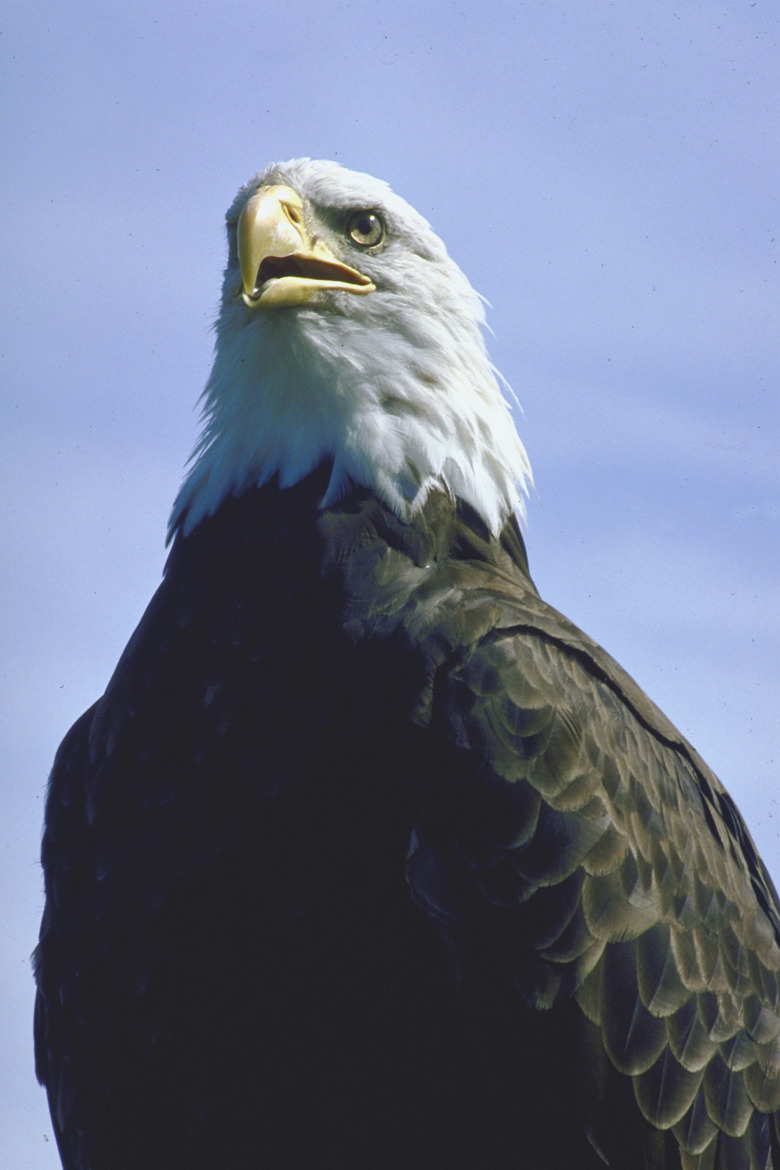Where Is The World's Largest Bald Eagle Population?
The bald eagle is the proud national symbol of the United States. Its snow-white feathered head, white tail and blackish breast make it one of the most instantly recognizable birds. You'd think that more bald eagles are likely to be seen in the continental United States than anywhere else, but unfortunately that's not correct.
Endangered Status
Endangered Status
The bald eagle was nearly wiped out in the United States by hunting for sport and efforts to protect fishing waters. The pesticide DDT also decimated the American bald eagle population. Since the use of DDT was restricted in 1972 and after a number of successful reintroduction plans, the American bald eagle population has increased. At the beginning of 2013, the birds' status was upgraded from endangered to threatened.
Largest Population
Largest Population
The world's largest population of bald eagles is found in Alaska and Canada. Bald eagles live near oceans and generally feed on fish, but they will also catch small mammals or feed on carrion. Younger bald eagles travel great distances. Florida-based eagles have been located in Michigan, while California-based bald eagles have traveled right up to Alaska.
References
Cite This Article
MLA
Denmar, Dawn. "Where Is The World's Largest Bald Eagle Population?" sciencing.com, https://www.sciencing.com/where-is-the-worlds-largest-bald-eagle-population-12753663/. 4 September 2013.
APA
Denmar, Dawn. (2013, September 4). Where Is The World's Largest Bald Eagle Population?. sciencing.com. Retrieved from https://www.sciencing.com/where-is-the-worlds-largest-bald-eagle-population-12753663/
Chicago
Denmar, Dawn. Where Is The World's Largest Bald Eagle Population? last modified March 24, 2022. https://www.sciencing.com/where-is-the-worlds-largest-bald-eagle-population-12753663/
